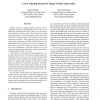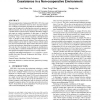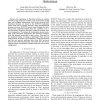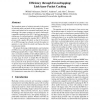1756 search results - page 277 / 352 » Cognitive Network Interference |
WIOPT
2005
IEEE
15 years 3 months ago
2005
IEEE
Wireless networks consist of senders, receivers, and intermediate nodes that collaborating (more or less) to establish the communication paths. Most of the researches in the domai...
MSWIM
2009
ACM
15 years 4 months ago
2009
ACM
The increasing number of independent IEEE 802.11 WLANs owned and managed by autonomous users has led to increased interference, resulting in performance degradation and unfairness...
WCNC
2008
IEEE
15 years 4 months ago
2008
IEEE
—The application of directional antennas in wireless networks brings numerous benefits, such as increased spatial reuse and mitigated interferences. Most MAC protocols with dire...
ICC
2000
IEEE
15 years 2 months ago
2000
IEEE
— The medium-access control (MAC) protocols for wireless networks proposed or implemented to date based on collision-avoidance handshakes between sender and receiver either requi...
NSDI
2008
15 years 6 days ago
2008
The broadcast nature of wireless networks is the source of both their utility and much of their complexity. To turn what would otherwise be unwanted interference into an advantage...




